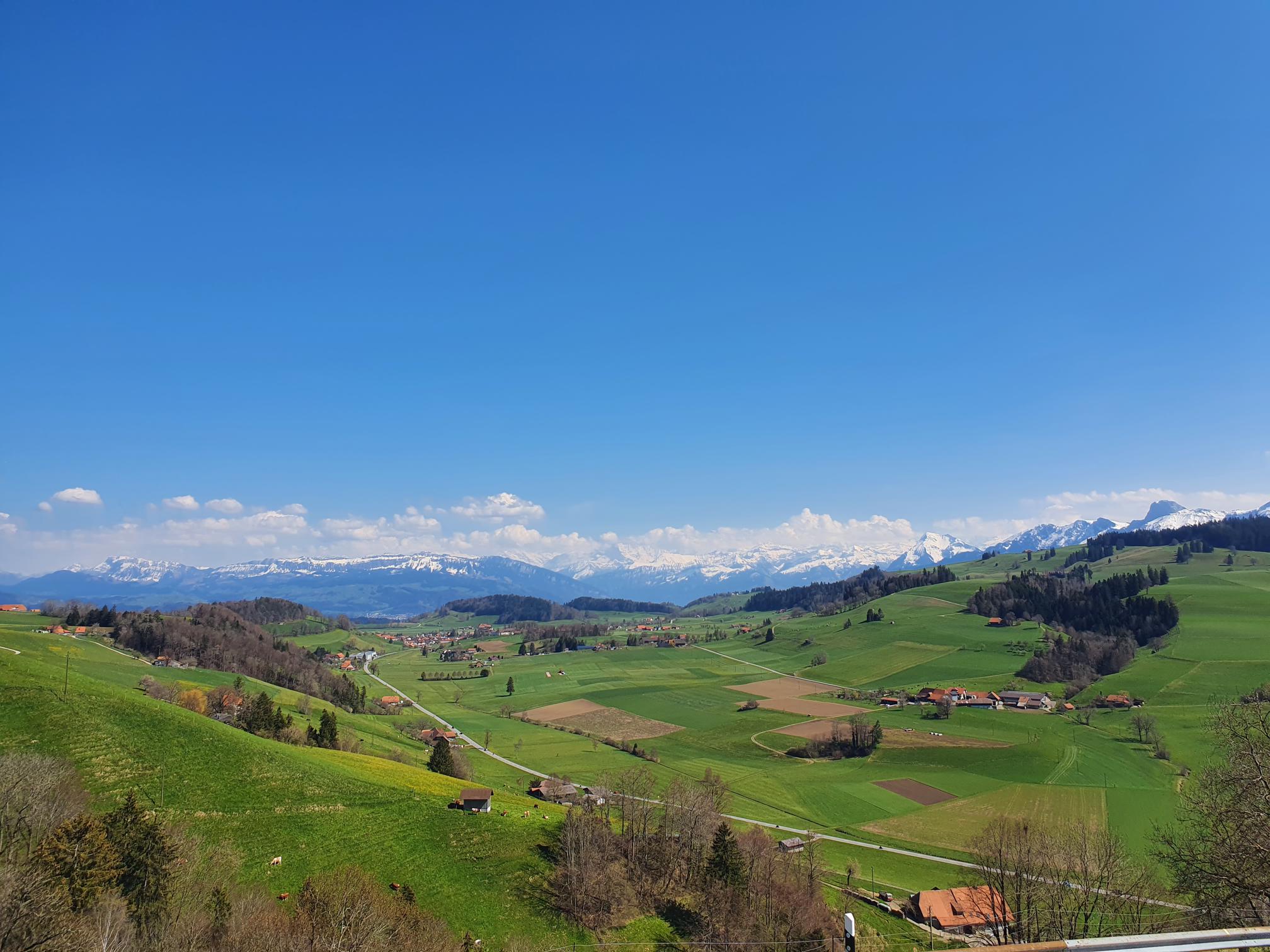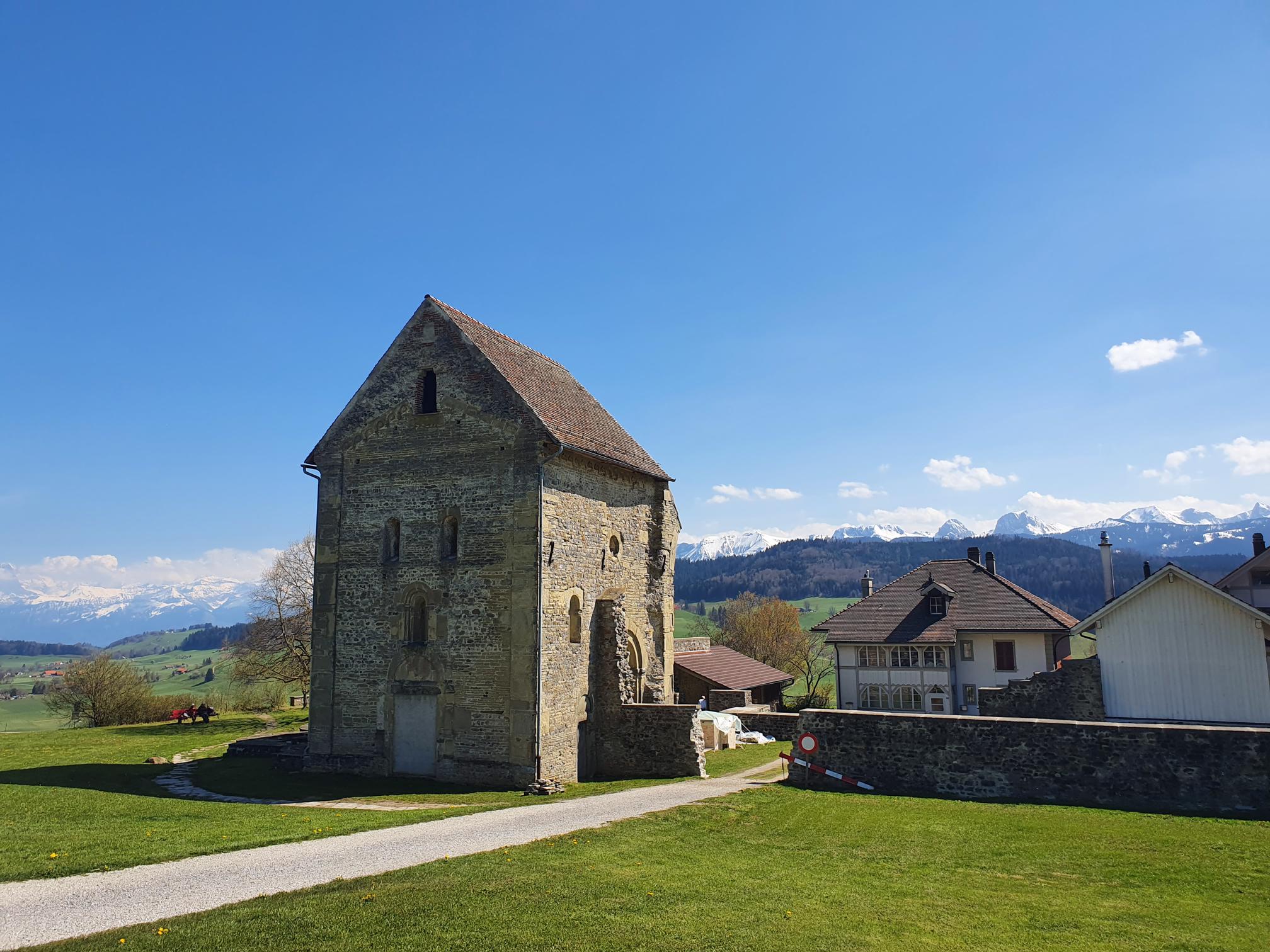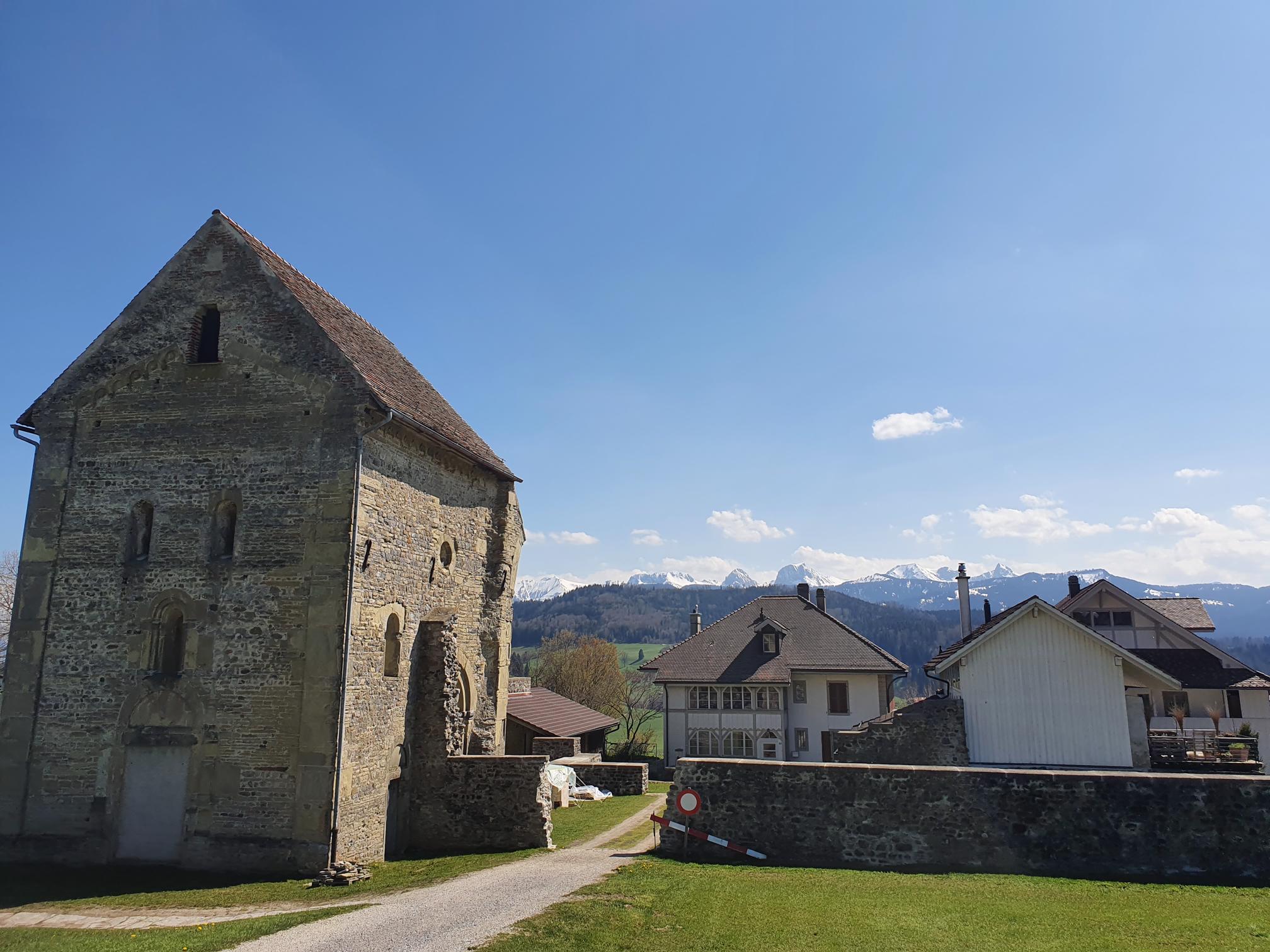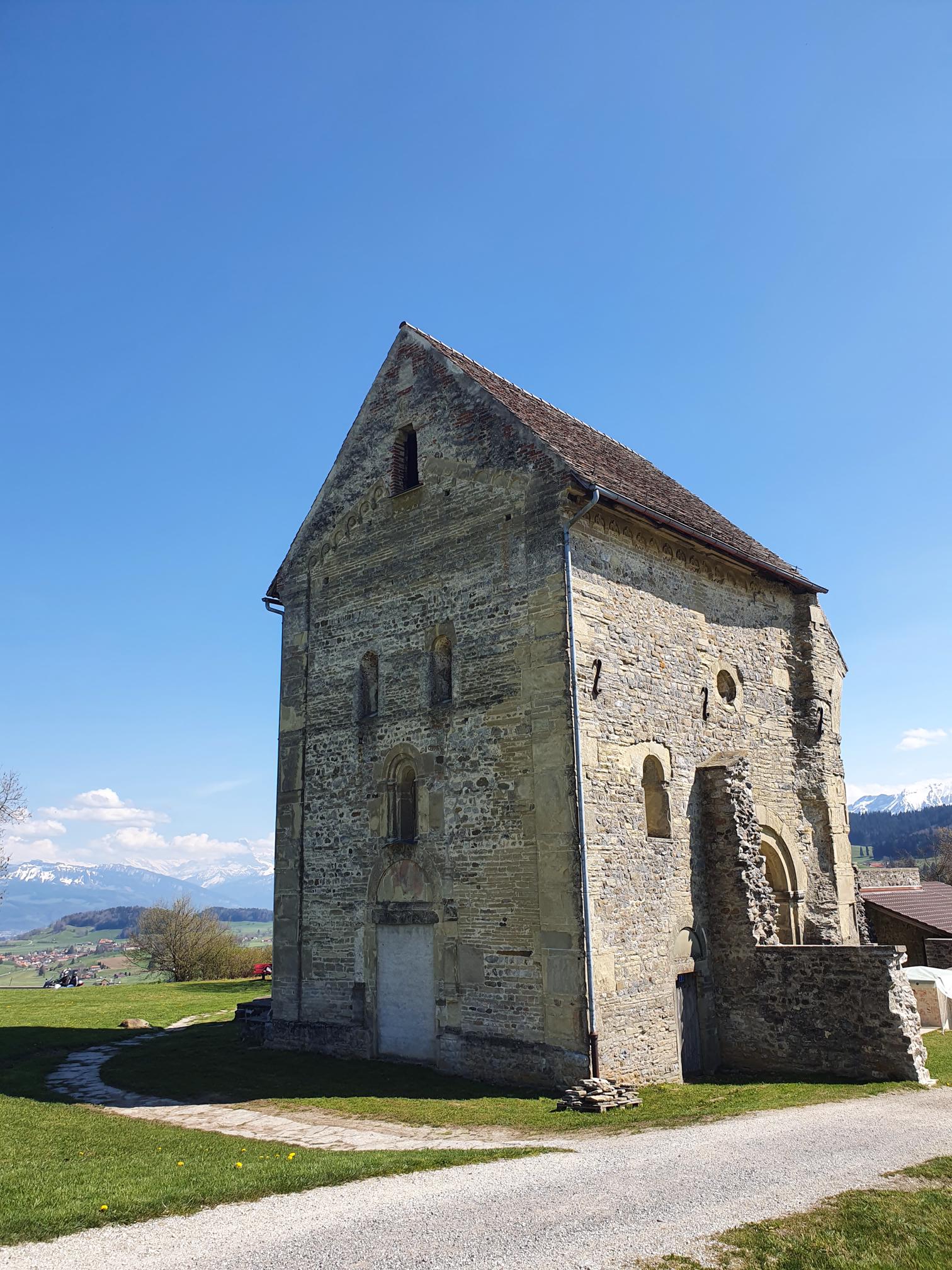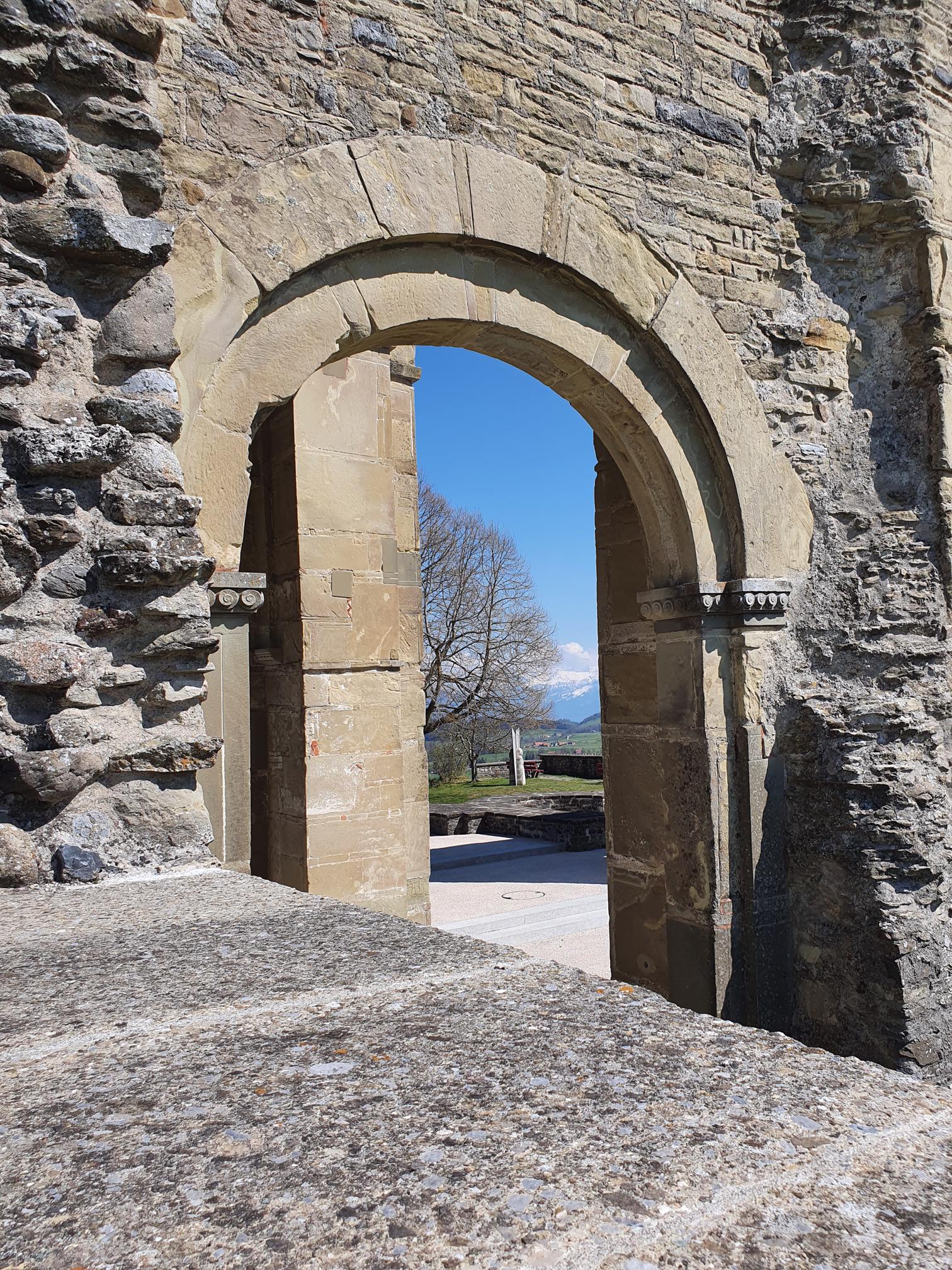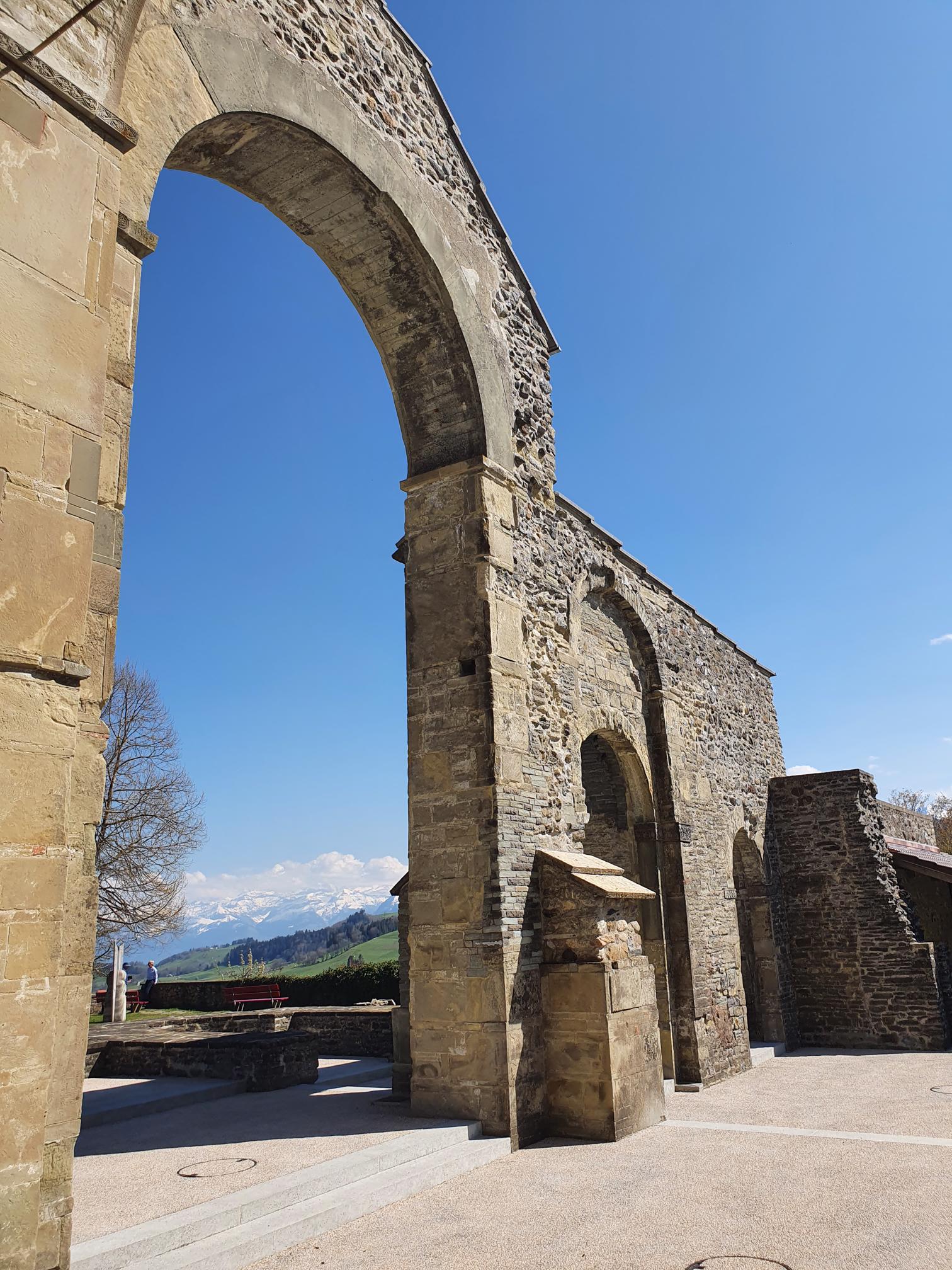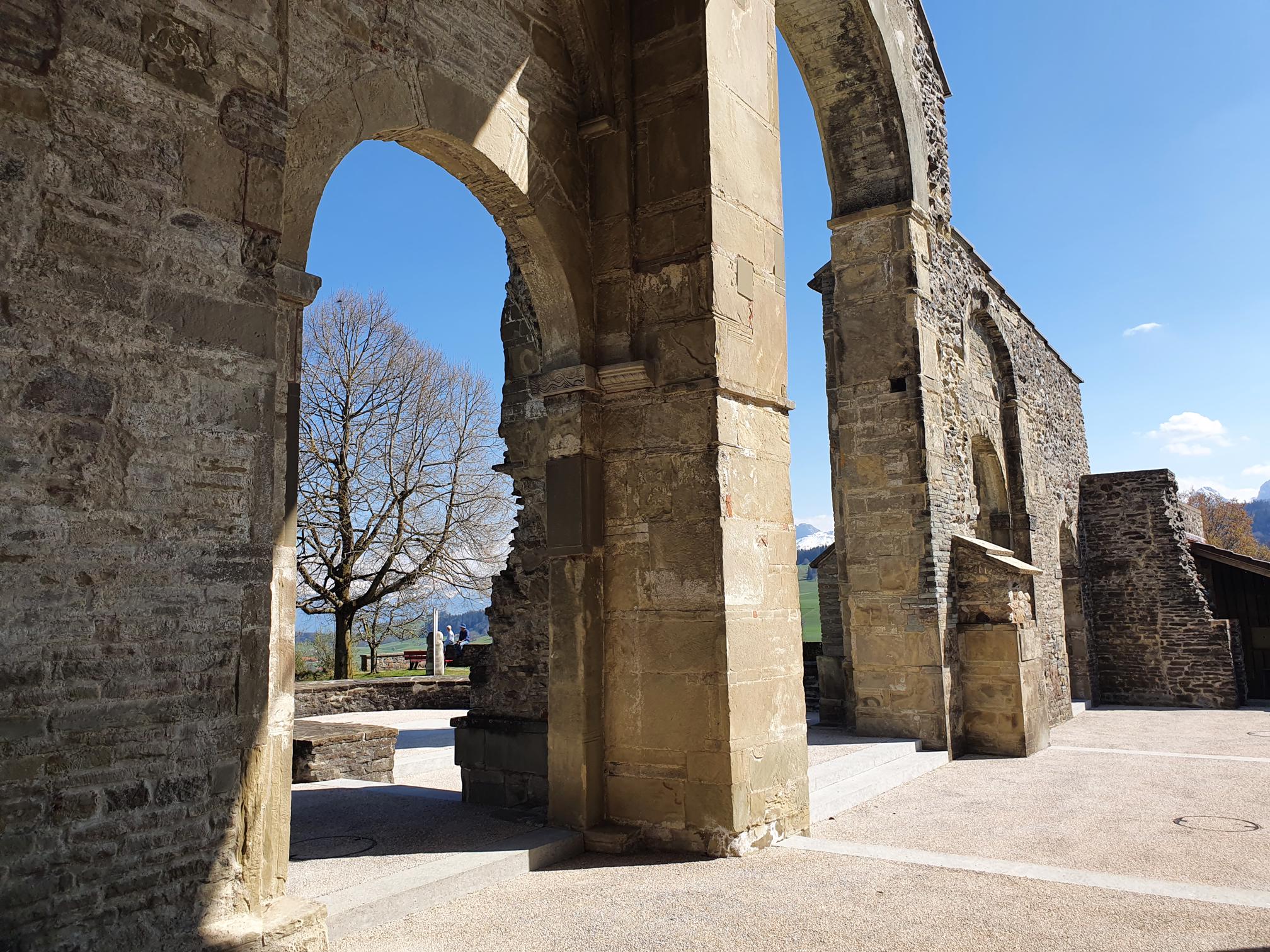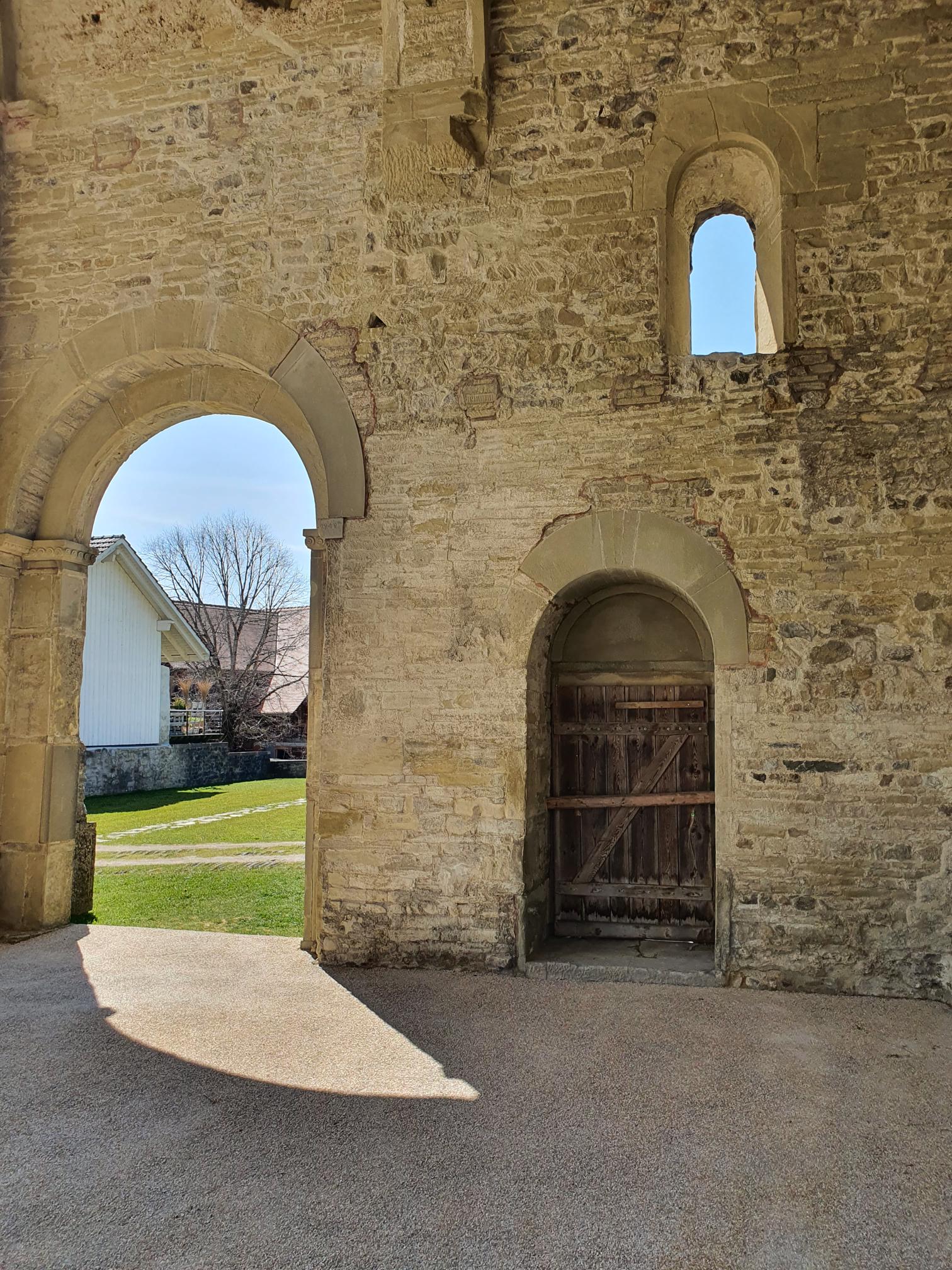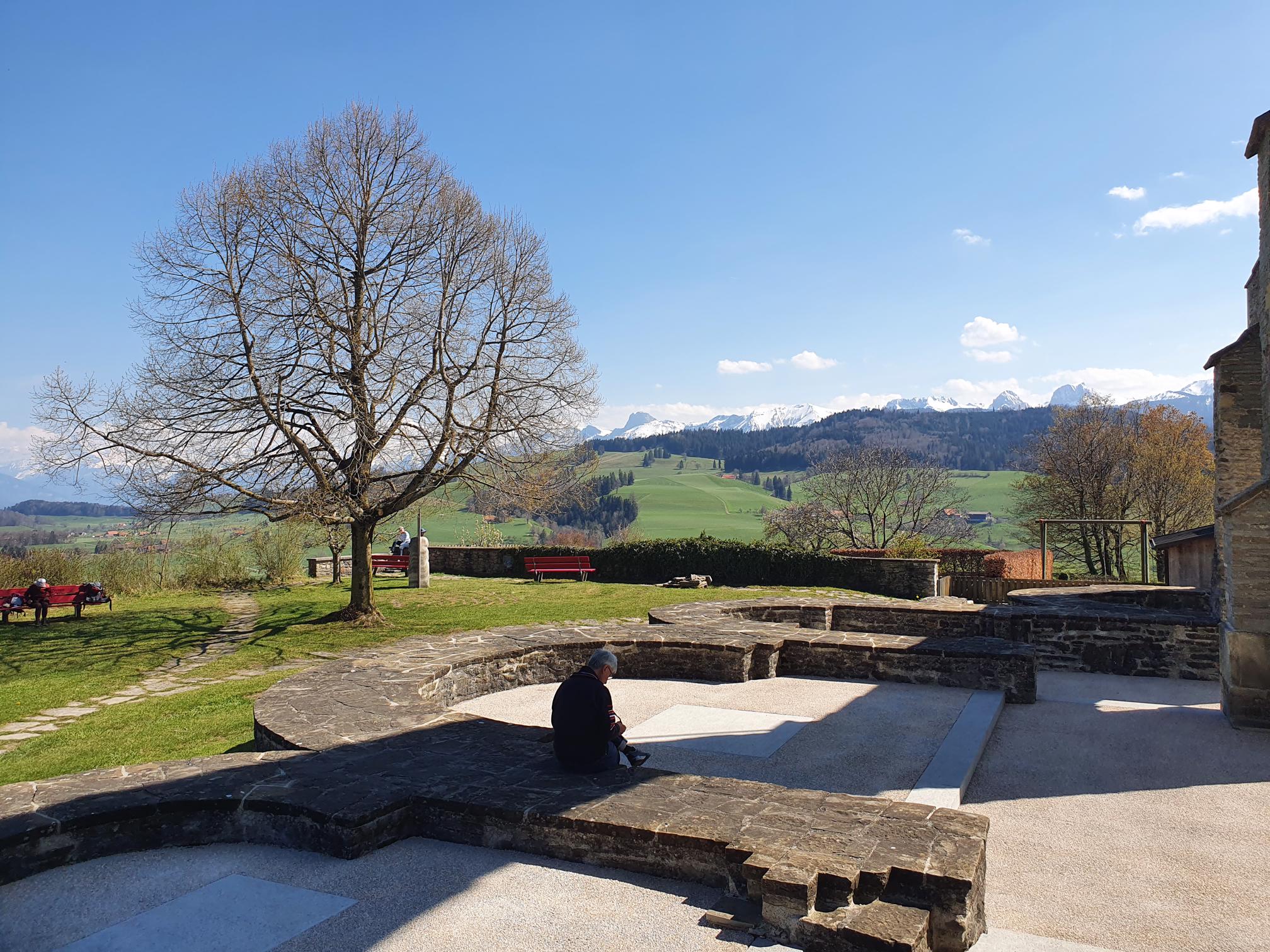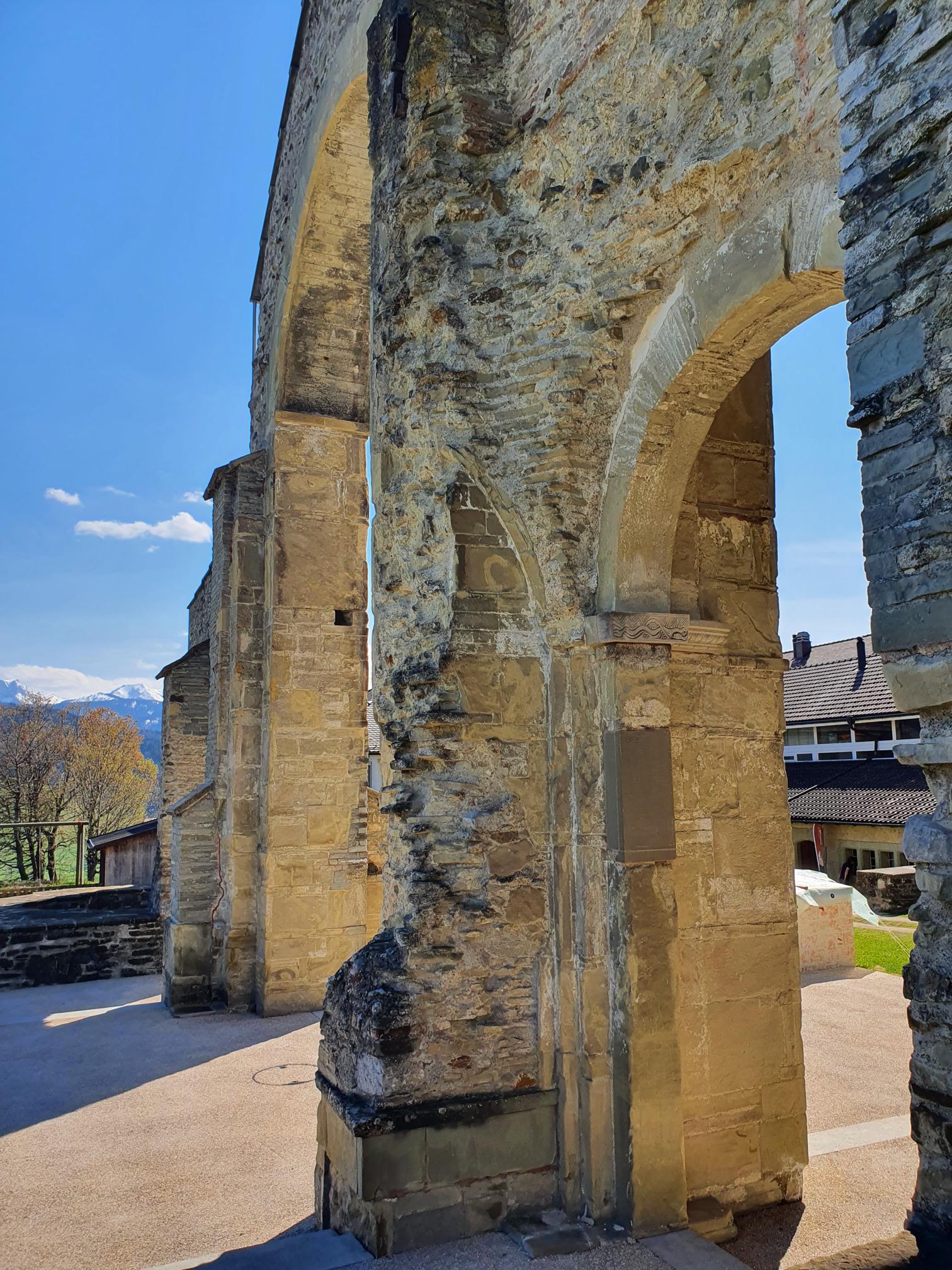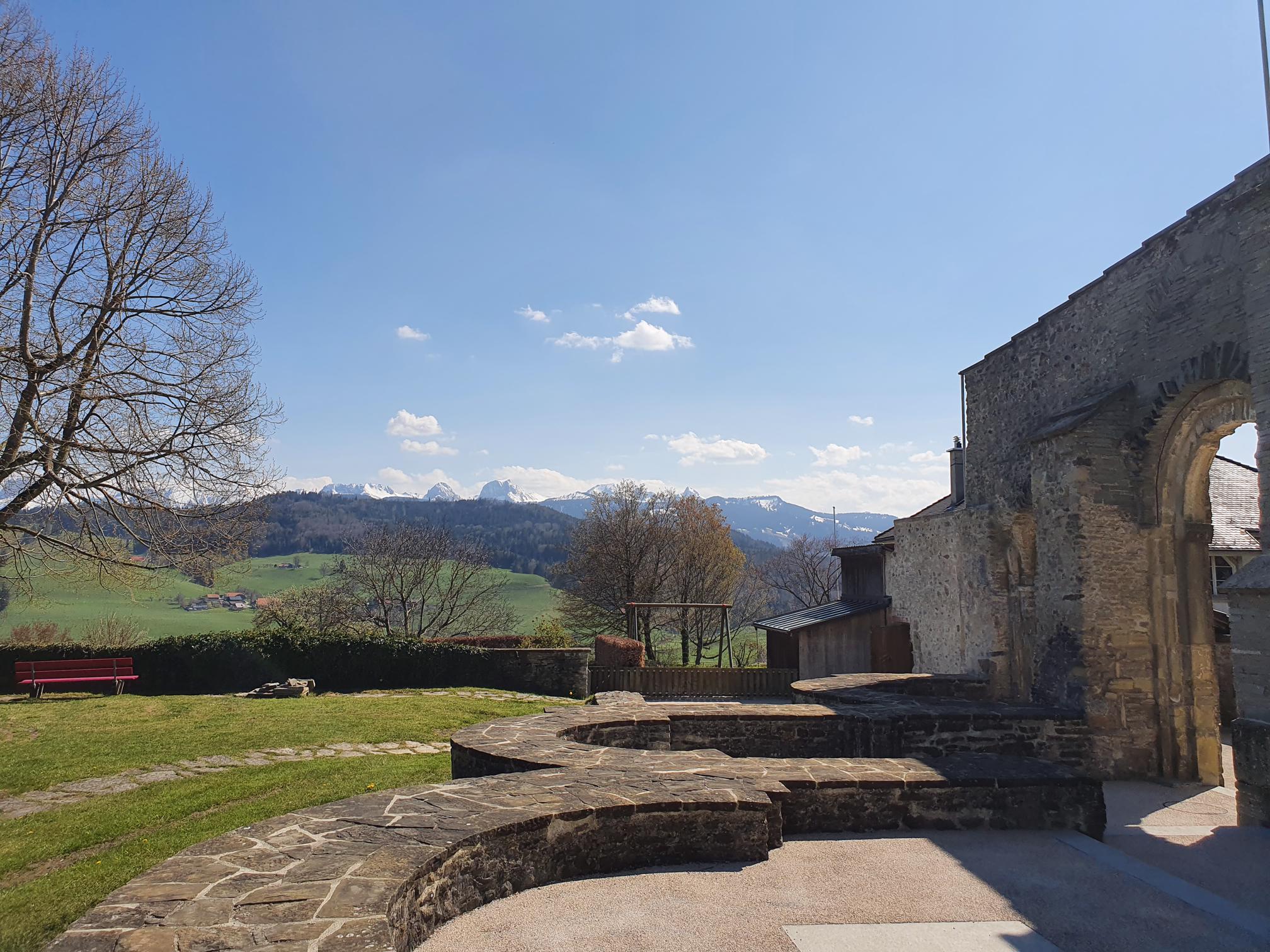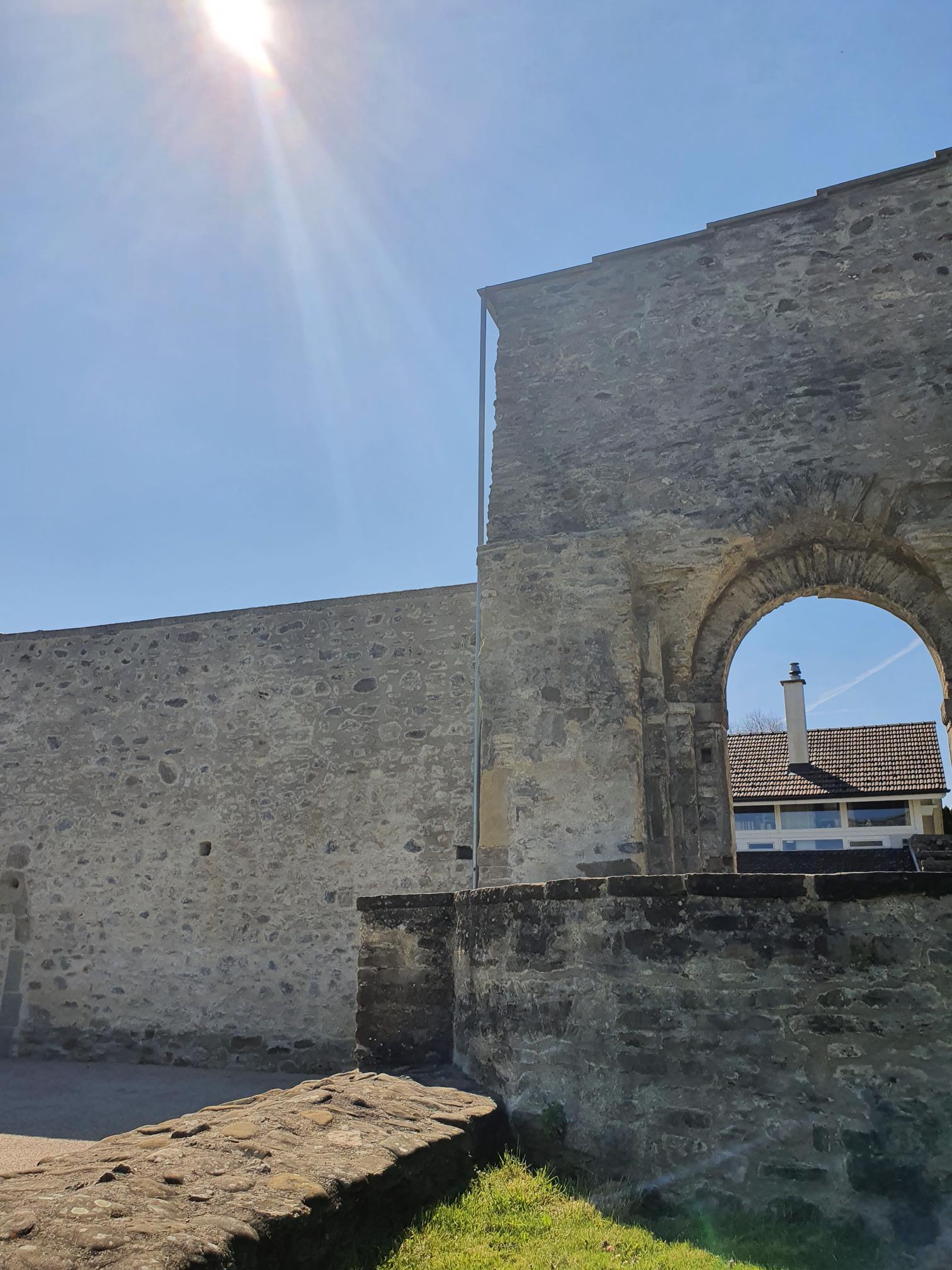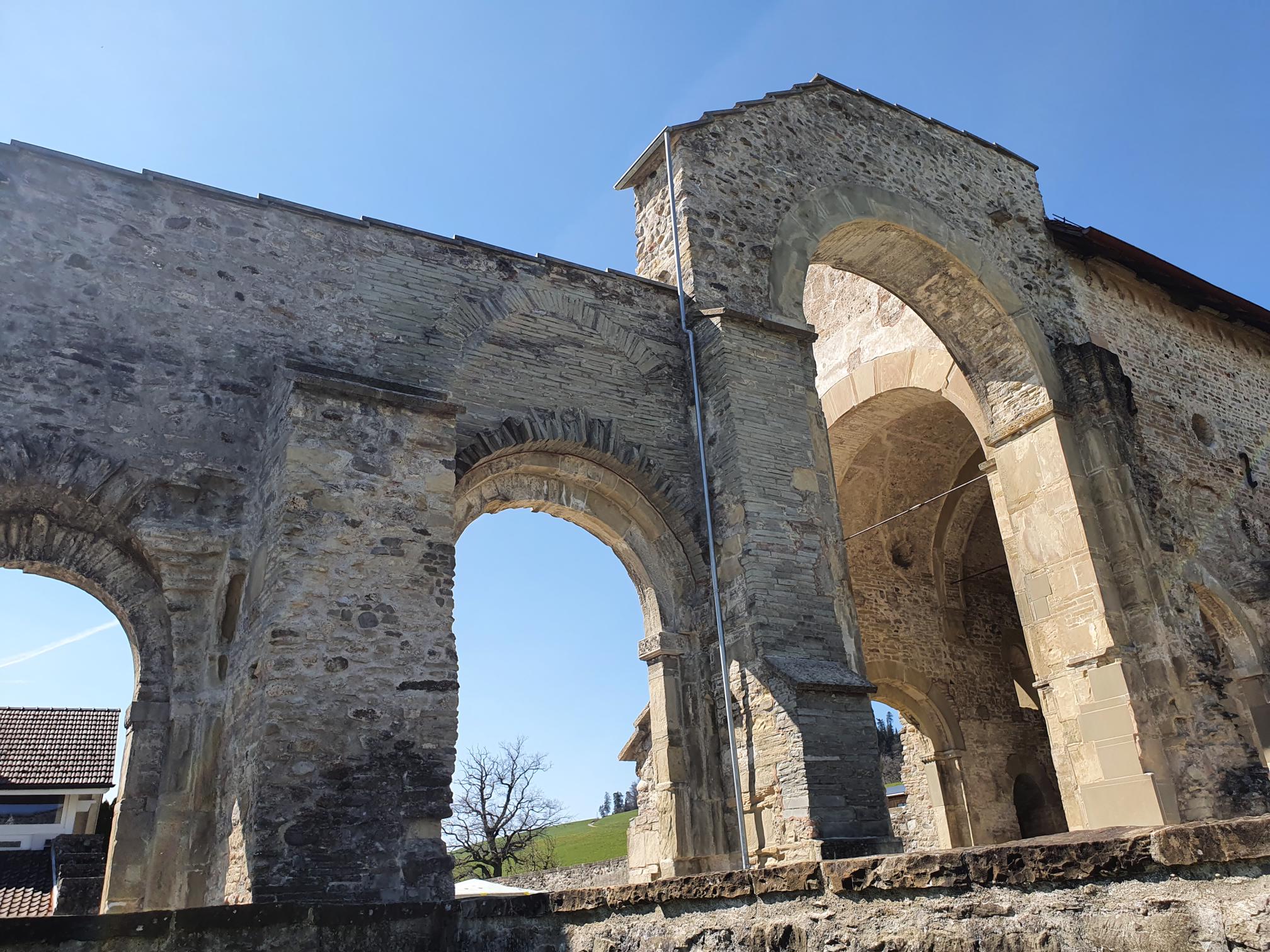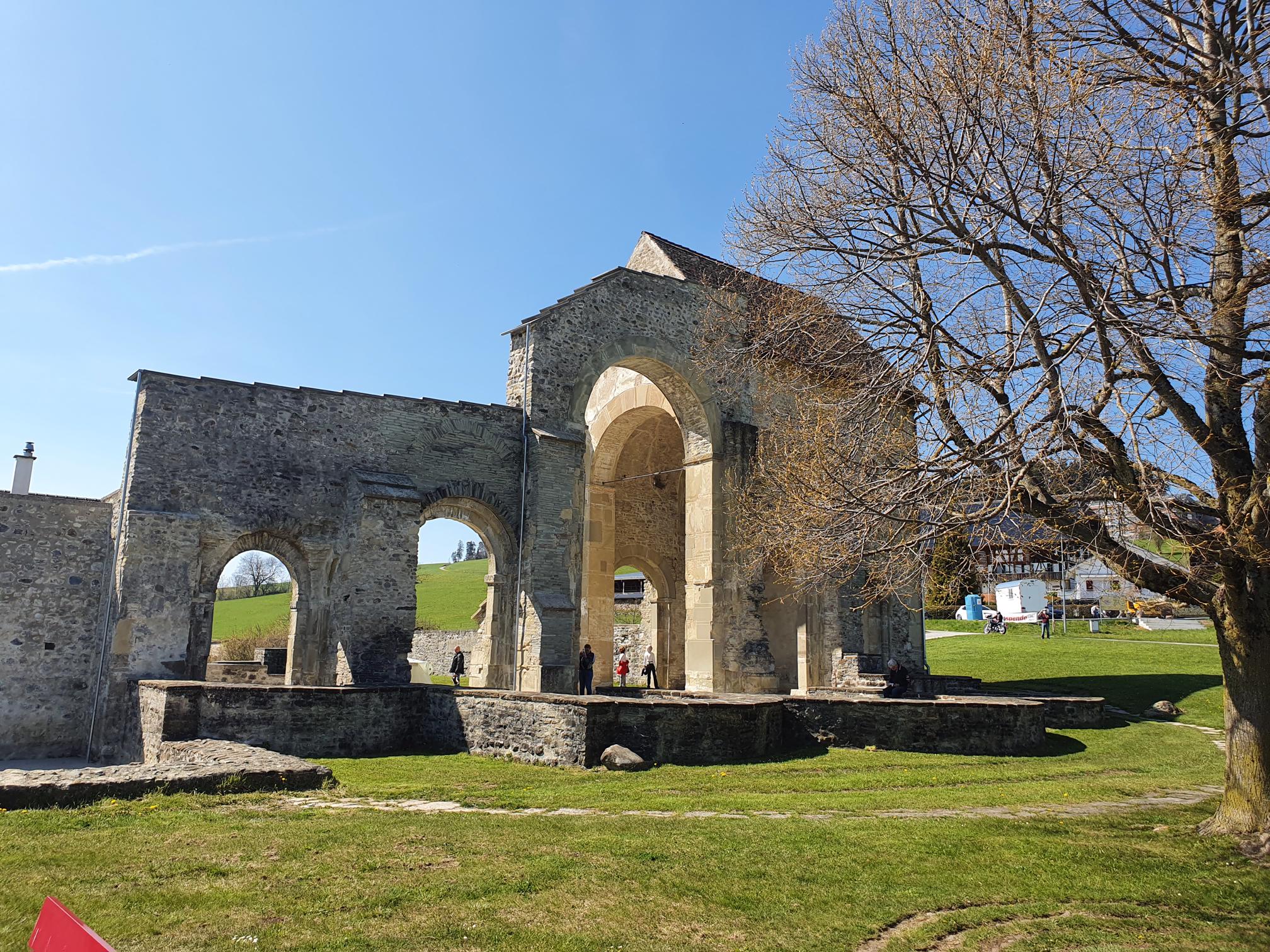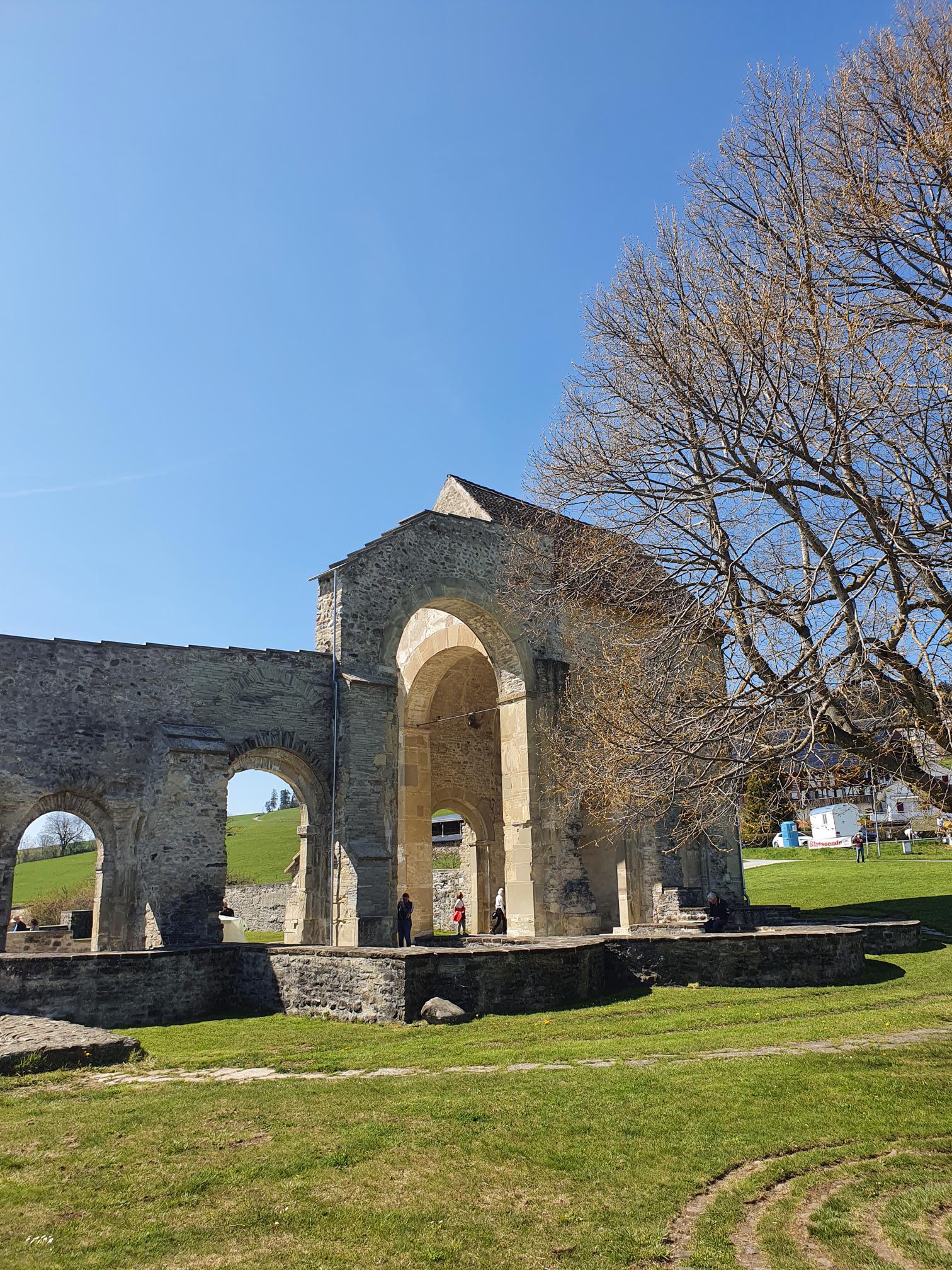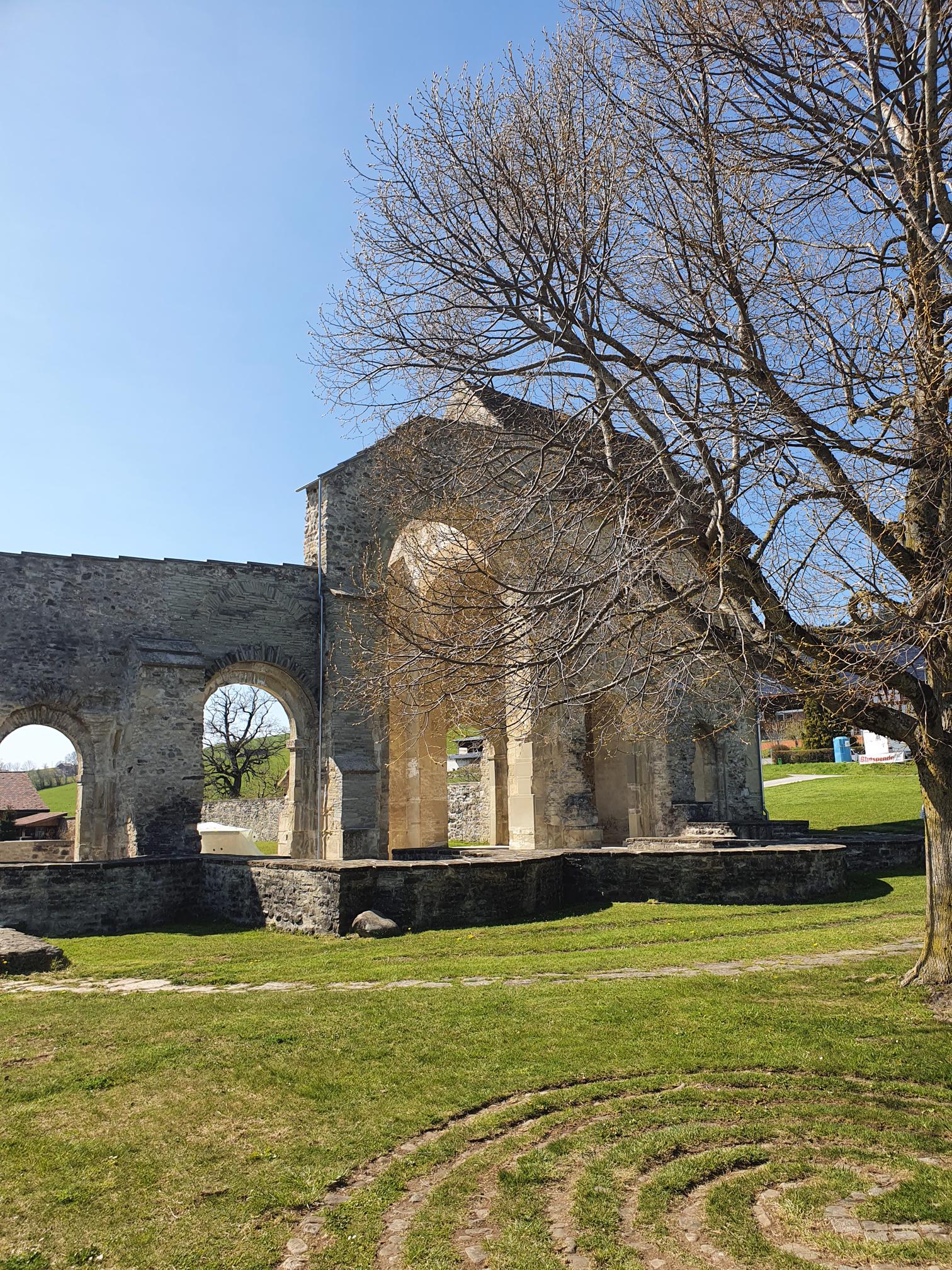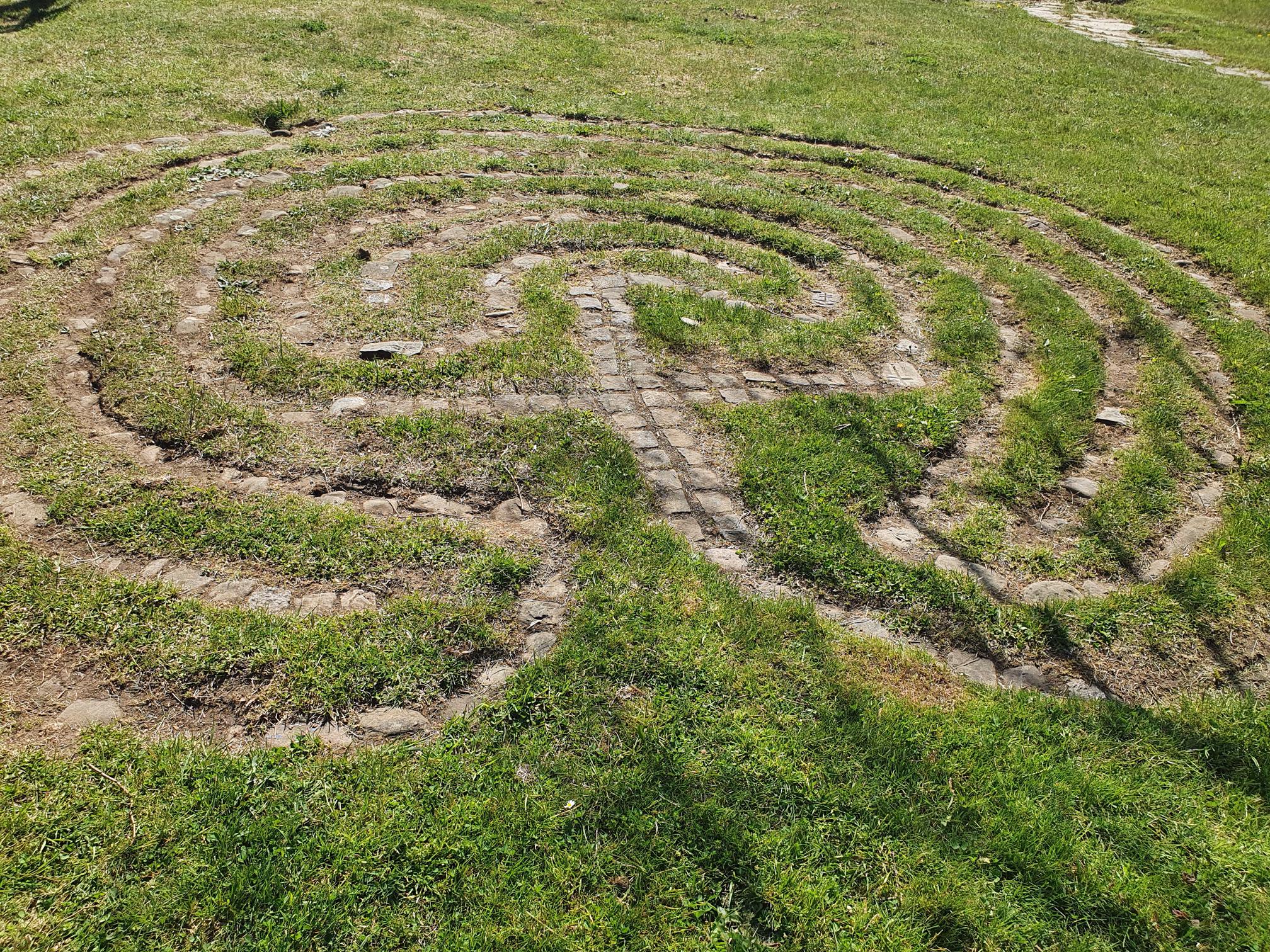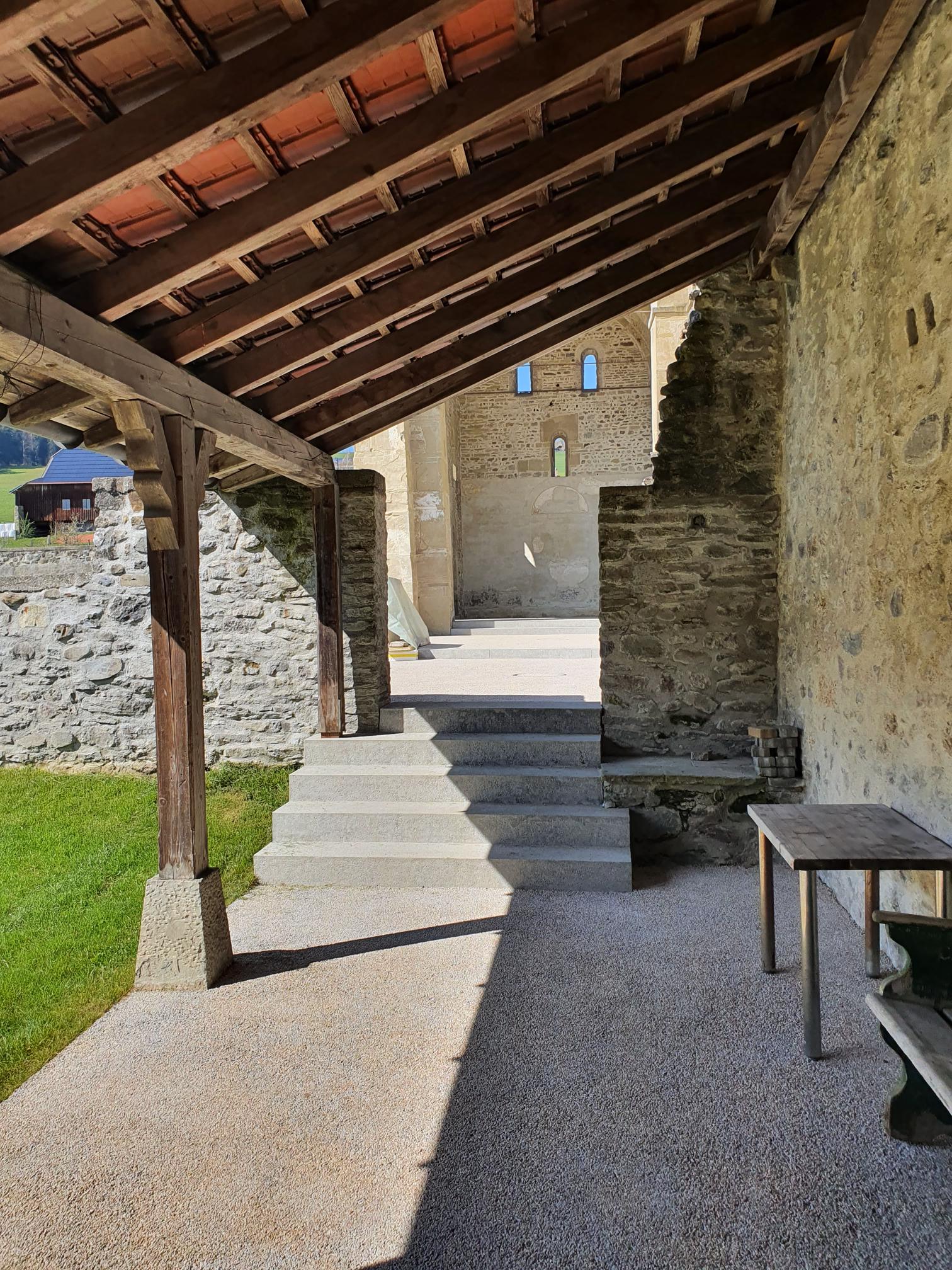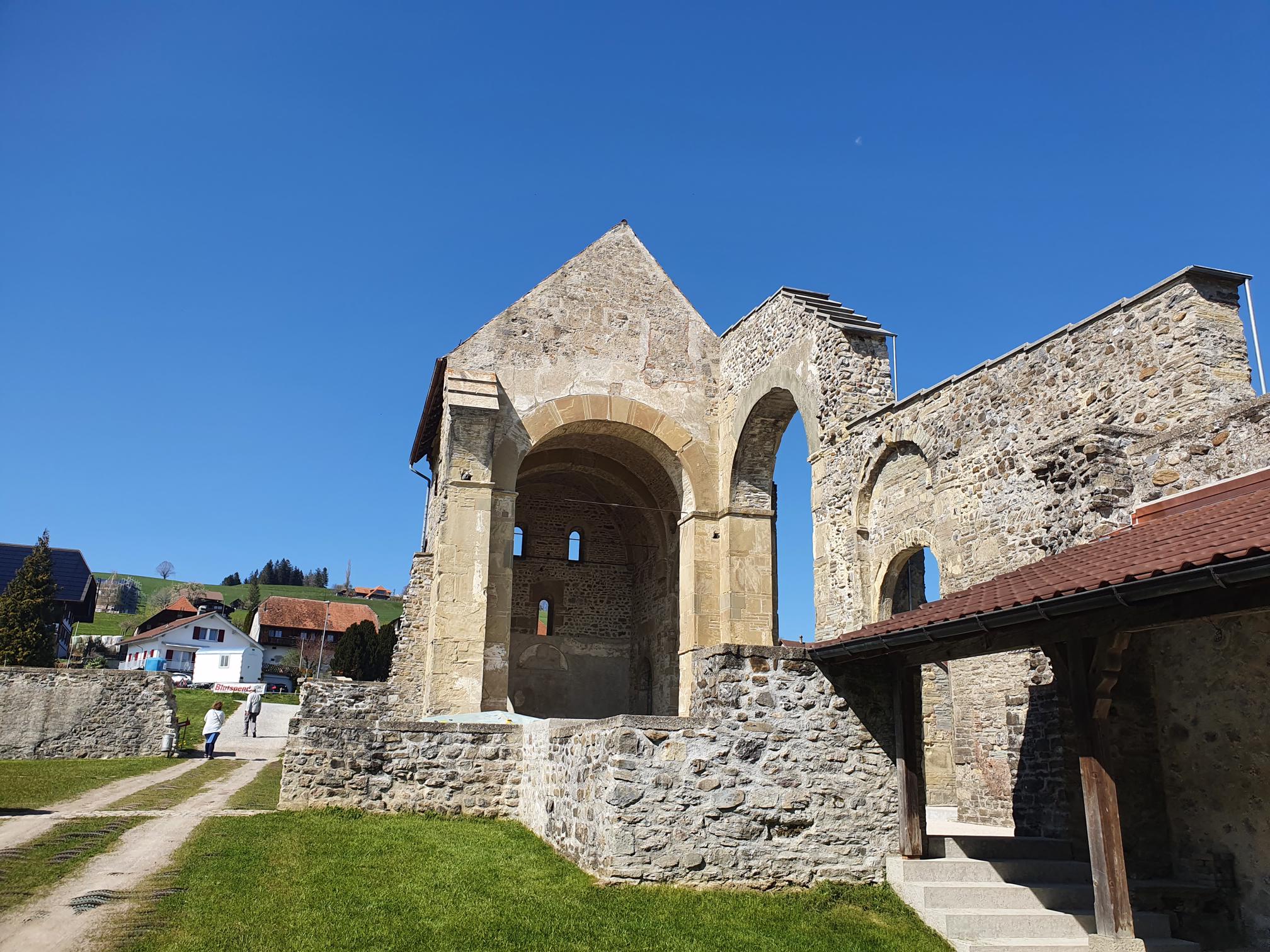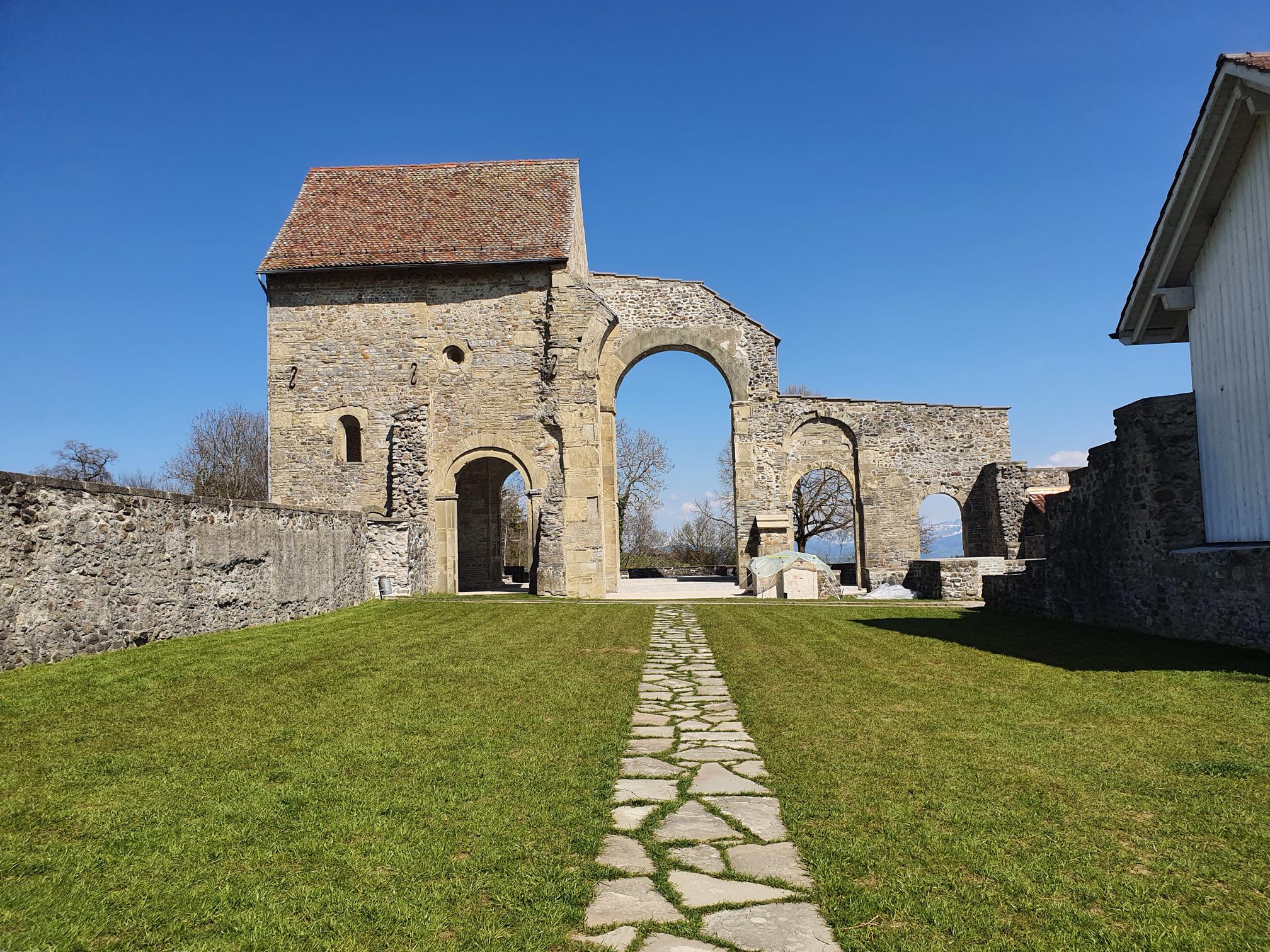The Rüeggisberg Monastery is a former Cluniac priory in the municipality of Rüeggisberg. Ulrich von Zell built the first cells around 1072. A Romanesque church was built from these by 1175. The northern transept and parts of the crossing are still preserved today. The monastery gained importance as a stop on the Way of St. James. In the late Middle Ages, the monastery fell into disrepair after a village fire and after the Reformation it was finally doomed. From then on, it served as a quarry.
According to legend, the good Queen Bertha of Burgundy founded the first church in Rüeggisberg in the 9th century. In any case, a church dedicated to Saint Martin already existed before the Rüeggisberg monastery was built. And it continued to exist even after the monastery had long since been abandoned and had become a ruin.
The journey, the wonderful view and the mystical atmosphere make a visit to Rüeggisberg an unforgettable experience. Anyone who wanders through the mysterious remains of the once mighty monastery and enjoys the magnificent view of the Bernese Oberland immediately feels transported back to the time of the friars.
Say
The region around Rüeggisberg is full of legends. There are stories of the "peddler from Rüschegg", the "Rappentaler from Riggisberg", the "brönnige Mann from Fultigen" and the "cat and mouse from Wattenwil". In the 19th century, the area was considered the poorhouse of Switzerland. The swampy area barely produced enough food. This led to people specialising in basket weaving. With hard work and the urge to sell their craft, many became peddlers. The contrast between rich and poor was always a topic of conversation when the rich from all over the world made a pilgrimage to the Gurnigelbad and looked from the sun into the shady valleys where the poor farmers toiled on the poor soil.
Directions
There is a parking lot directly behind the remains of the wall.


